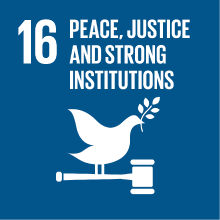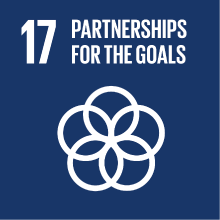HISTORY OF BUDDHISM
- Academic year
- 2020/2021 Syllabus of previous years
- Official course title
- STORIA DEL BUDDHISMO
- Course code
- LT2950 (AF:322088 AR:181402)
- Teaching language
- English
- Modality
- On campus classes
- ECTS credits
- 6
- Degree level
- Bachelor's Degree Programme
- Academic Discipline
- L-OR/20
- Period
- 2nd Semester
- Course year
- 3
- Where
- VENEZIA
- Moodle
- Go to Moodle page
Contribution of the course to the overall degree programme goals
By the end of this course a typical student should be able to do most of the following:
Locate the origins of Buddhism in its socio-religious context;
• Outline the spread of Buddhism in South Asia;
• Explain the fundamental concepts of Buddhism and relate these to the practices;
• Describe its main scriptural authorities;
• Identify a range of motivations underlying ordination and the relation between monasteries and the society;
• Discuss some of the above with reference to relevant primary and secondary sources.
The course is an elective for the BA in Languages, Cultures and Societies of Asia and North Africa.
Expected learning outcomes
1. Have gained a good knowledge and critical understanding of the main topics concerning the cultural history of early Buddhism in South Asia;
2. Have gained an understanding of the continuities and discontinuities between the main schools of early Buddhism;
3. Be able to find and use critically a range of materials including books, journals, primary sources, and web-based resources relevant to the topics studied in the course.
4. Write a sustained argumentative essay on the basis of their study of the bibliography of the course.
Pre-requirements
Contents
The course will develop along the following lines:
1) Geography and general chronology (Introduction)
1a) Early diffusion of Buddhism: the chronological debate and the role of archaeology
1b) Cities and settlements of Early Buddhism
1c) Life and cultural material in North India around mid-1st millennium BCE
2) Mauryan period: archaeology, politics and epigraphy: survey course on major case studies
2a) The evolution of Buddhism
2b) Expansion of Buddhism in the North-West
2c) The Mauryan edicts
2d) A post-Mauryan "restauration"? The debate on Pusyamitra Sunga (seminars)
3) Historic Buddhism: schools
3a) From Teravada to Mahayana and Vajrayana
3b) How to read Buddhist art
4) Historic Buddhism: centres (survey course on major case studies)
4a) Gandhara (including North-West and Kapisa): art, architecture, epigraphy and texts
4b) Andhra Pradesh and surroundings areas: art, architecture, epigraphy and texts
4c) Madhya Pradesh and surrounding areas: art, architecture, epigraphy and texts
4d) Bihar, Nalanda and other sites: art, architecture, epigraphy and texts
4d) Ajanta, and the cave art and architecture of Buddhism
4e) Introduction: Kashmir, Himalaya-Karakorum and Bamiyan, Nepal
4f) Introduction: Odisha and Sri Lanka (see LT2950 South-East Asia)
5) Indian Buddhism and China
5a) Faxian’s accounts
5b) Song Yun’s accounts
5c) Xuanzang’s accounts
5d) Korean and Tibetan pilgrims
5d) "Hardship and Downfall of Buddhism" (seminars)
6) Beyond the Himalayas, beyond the Late Antiquity: a projection in Ladakh, Nepal, Bhutan, China, Korea and Japan (seminars)
Referral texts
G. Tucci, Vita di Buddha. Luni Editrice 2019
J. Strong, Buddhism. An Introduction. OneWorld 2015
R. Salomon, The Buddhist Literature of Ancient Gandhara (selected readings). Wisdom 2018
G. Pugliesi Carratelli, Gli editti di Asoka (selected readings). Adelphi 2003
G. Verardi, Hardship and Downfall of Buddhism in India (selected chapters). Manohar 2011
C. Pieruccini, L'arte dell'India.1 Dalle origini ai grandi templi medievali, Einaudi 2020: capitoli II.1, 7-8, III.3-4, IV.1-2.
J. Neelis, Early Buddhist Transmission and Trade Networks (selected chapters). Brill 2010
Handouts on sites, architecture and monuments will be available on Moodle.
Selected texts and epigraphic material will be available on Moodle.
Assessment methods
Before the exam, the candidate will present a short (about 3000 words in English or Italian) research essay on a topic selected by the candidate that references and cites the texts we have studied. Students are encouraged to work on the paper beforehand but cannot use their notes during the exam.
Type of exam
Teaching methods
Further information
2030 Agenda for Sustainable Development Goals
This subject deals with topics related to the macro-area "International cooperation" and contributes to the achievement of one or more goals of U. N. Agenda for Sustainable Development


